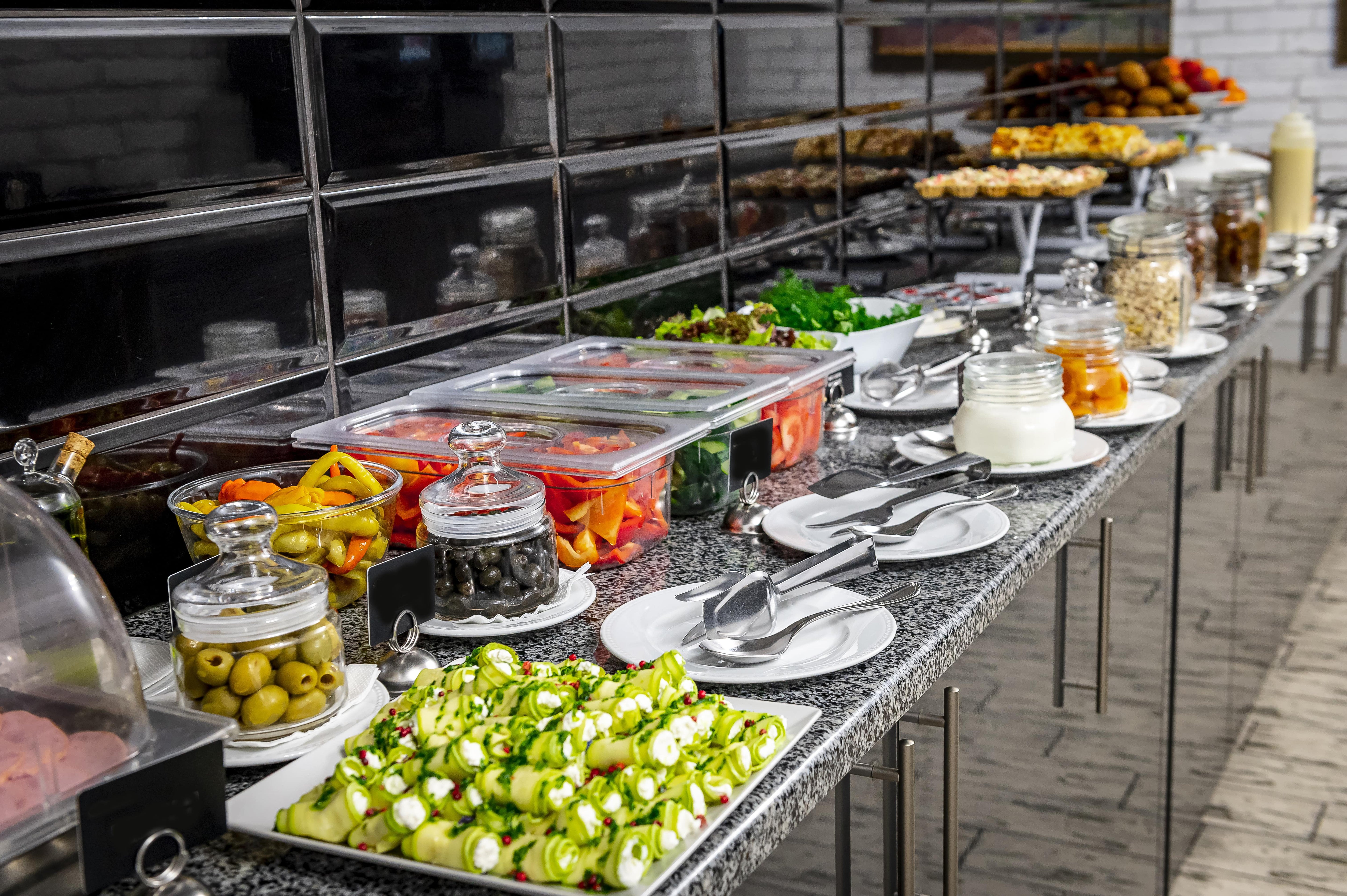
Tips on How to Run a Restaurant Successfully
Opening a restaurant feels like stepping into a battlefield where passion meets brutal reality. You've got amazing recipes, a killer location, and dreams of packed dining rooms. Then the first health inspector arrives. Your star chef quits during the lunch rush. Suppliers jack up prices overnight.
Here's what separates restaurants that thrive from those posting "For Lease" signs: successful owners treat their business like a business first, not just a creative outlet. They obsess over numbers, build reliable systems, and understand that every single detail affects their bottom line.
This guide provides true insight into restaurant ownership. We're talking real strategies that work in real kitchens with real problems. Whether you're about to sign your first lease or you're struggling to turn a profit after two years, these insights come from operators who've survived the chaos and built profitable businesses.
The restaurant industry chews up dreamers. Don't be one of them.
Key Takeaways
- Financial discipline separates survivors from failures - smart operators keep food costs under 35% while building cash reserves that weather unexpected storms.
- Your team makes or breaks your reputation - hire people who genuinely care about hospitality, then train them relentlessly and reward exceptional performance.
- Every detail matters to customers - from menu presentation to payment processing, small touches create lasting impressions that drive repeat business.
- Marketing isn't just advertising - authentic community connections and consistent digital presence build trust faster than flashy campaigns.
- Systems beat chaos every time - standardized procedures and quality controls let you maintain excellence even when you're not there.
- Fundamentals trump trends - master the basics before chasing viral food crazes or expensive technology upgrades.
Defining Your Restaurant Concept and Business Plan
Your concept isn't your menu - it's your entire reason for existing. Walk into any successful restaurant and you'll feel it immediately. Any fast food restaurant isn't just about burgers; it's quickly done right with premium ingredients. Your local dive bar isn't just cheap drinks; it's where neighbors become friends.
Planning for a restaurant business starts with brutal honesty about your market. That Vietnamese fusion concept might sound brilliant, but if your town has three Asian restaurants already struggling, you're walking into a meat grinder. Study your competition like your life depends on it, because it does.
Your target customer needs to be crystal clear. "Everyone" isn't a target - it's a fantasy. Young professionals grabbing quick lunches? Families celebrating birthdays? Date night couples? Each group has different needs, spending habits, and expectations. Pick one and build everything around them.
Brand consistency matters more than most owners realize. Your concept should show up in your music, lighting, staff uniforms, and especially your presentation materials. Professional establishments work with quality suppliers like KyivWorkshop to ensure their menus, signage, and customer touchpoints reinforce their brand story rather than undermining it with cheap-looking alternatives.
Write down your concept in one sentence. If you can't, you don't have one yet. Keep working until you do.
Financial Management and Funding
Numbers don't lie, but restaurant owners sure love ignoring them. Your food costs should hover between 28-35% of revenue. Labor costs need to stay under 35%. If these percentages creep higher, you're bleeding money whether you realize it or not.
Track everything daily, not monthly. Weekly food cost calculations catch problems while you can still fix them. Monthly reviews are autopsies - interesting, but too late to save the patient. Use your point-of-sale system to generate reports that show exactly which items make money and which ones are killing your margins.
Essential Cost Management Areas:
- Food Costs (28-35% of revenue): Implement portion control systems, track inventory meticulously, and negotiate favorable supplier terms without compromising quality.
- Labor Costs (25-35% of revenue): Focus on strategic scheduling, cross-train employees for multiple roles, and invest in technology that streamlines operations.
- Fixed Costs (20-25% of revenue): Secure long-term contracts where beneficial, invest in energy efficiency, and optimize space utilization.
- Marketing (3-6% of revenue): Track return on investment carefully, emphasize digital strategies, and engage actively with your local community.
Cash flow kills more restaurants than bad food. You need three months of operating expenses sitting in the bank at all times. Equipment breaks. Suppliers demand payment. Slow seasons happen. The restaurants that survive these hits are the ones with cash reserves.
Menu engineering isn't just fancy talk - it's profit optimization. Analyze your sales data ruthlessly. That signature pasta dish everyone raves about? If it's costing you money, either fix the recipe or raise the price. Sentiment doesn't pay rent.
Build relationships with multiple suppliers for your key ingredients. Single-source dependency is a recipe for disaster when supply chains hiccup. Your backup suppliers might cost more, but staying open beats closing because you can't get tomatoes.
Mastering Menu Development and Food Quality
Your menu is a sales tool first, artistic expression second. Every item needs to justify its existence through sales volume or profit margin. Preferably both.
Start small. Eight appetizers and twelve entrees give customers choices without overwhelming your kitchen staff. Complexity kills consistency, and consistency builds customer loyalty. You can always add items later - removing beloved dishes creates angry customers.
Menu presentation drives ordering behavior more than most owners realize. People read menus in predictable patterns, focusing on the upper right corner first. Place your highest-margin items there. Professional menu covers protect your investment while communicating quality before customers even start reading.
Quality control requires written standards, not just make it good. Document portion sizes, cooking temperatures, and plating specifications. Train your expediter to inspect every plate before it leaves the kitchen. One bad meal creates three negative reviews online.
Building and Managing Your Dream Team
Hiring the wrong person costs you thousands in training, lost productivity, and customer complaints. Hiring the right person pays dividends for years. Choose carefully.
Attitude beats experience every time. You can teach someone to use your point-of-sale system. You can't teach them to care about customers. Look for people who smile naturally, ask thoughtful questions, and demonstrate genuine interest in hospitality.
Position-Specific Hiring and Management Guidelines:
- Servers: Prioritize excellent communication skills, natural empathy, and efficiency under pressure. Focus training on comprehensive menu knowledge, effective upselling techniques, and professional conflict resolution. Retain top performers through performance bonuses and flexible scheduling options.
- Kitchen Staff: Seek candidates with meticulous attention to detail, strong teamwork abilities, and physical stamina. Training should emphasize food safety protocols, recipe consistency, and speed development. Support retention through skill development programs and clear promotion pathways.
- Management Team: Look for proven leadership capabilities, creative problem-solving skills, and exceptional organizational abilities. Comprehensive training should cover restaurant manager duties, financial oversight responsibilities, and team development strategies. Encourage retention through profit-sharing arrangements and professional development opportunities.
Create training programs that cover both technical skills and your specific culture. New hires should understand not just how to ring up orders, but why you do things differently from other restaurants. Document everything so training stays consistent regardless of who's doing it.
Pay competitively or pay constantly. Training replacement staff costs significantly more than keeping good employees happy. Offer health benefits if possible, meal discounts, and flexible scheduling. Recognize exceptional performance publicly and reward it financially.
Communication prevents most workplace problems. Hold brief staff meetings before each shift to discuss specials, private parties, or operational changes. Create systems for staff to report problems or suggest improvements without fear of retaliation.

Marketing and Promotion Strategies That Drive Results
Marketing isn't just posting pretty food photos on Instagram. It's building relationships that turn strangers into regulars into advocates for your restaurant.
Your online presence starts with your website and Google My Business listing. Customers research restaurants before visiting, and outdated information or poor photos kill potential visits before they happen. Invest in professional photography that makes your food irresistible and your space inviting.
Social media requires consistency, not perfection. Post regularly about daily specials, behind-the-scenes moments, and customer celebrations. Respond to comments and messages promptly. People expect interaction, not just broadcasts.
Explore proven restaurant promotion strategies that combine digital marketing with community engagement. Email marketing delivers exceptional returns when done correctly. Collect customer emails through reservation systems and special offers, then send monthly newsletters highlighting new menu items, upcoming events, and exclusive promotions.
Community involvement builds lasting relationships that survive economic downturns. Sponsor local sports teams, participate in charity events, and partner with nearby businesses for cross-promotions. These activities position your restaurant as a community asset rather than just another business.
Customer loyalty programs work when they're simple and valuable. Punch cards for casual restaurants, points systems for upscale establishments. Focus on making the reward worth earning rather than creating complicated rules that confuse customers.
Creating Exceptional Customer Experiences
Outstanding customer experiences happen when everyone on your team understands that their job is making people happy, not just completing tasks.
Your physical space tells a story before customers even order. Is it clean? Comfortable? Does the music match your concept? Are the restrooms spotless? Customers notice everything, and negative impressions spread faster than positive ones.
Service standards should feel natural, not scripted. Train your staff to read customers' preferences and adapt accordingly. Some diners want detailed menu explanations; others prefer minimal interaction. Great servers recognize these cues and adjust their approach.
Attention to seemingly minor details separates good restaurants from exceptional ones. Quality check presenters show that you care about every aspect of the dining experience, not just the food. Clean silverware, properly functioning equipment, and well-maintained restrooms demonstrate professionalism.
Handle complaints as opportunities to create loyal customers. Most dissatisfied guests will give you a chance to make things right if you respond appropriately. Train your staff to listen actively, apologize sincerely, and take concrete action to resolve problems. Often, customers who experience excellent problem resolution become more loyal than those who never encounter issues.

How Should a Restaurant Be Run?
Running a restaurant successfully requires systems that work whether you're there or not. Document everything so your standards survive staff turnover and busy periods.
Comprehensive Daily Operations Framework:
- Morning Preparation Tasks: Complete thorough equipment functionality checks, verify ingredient inventory levels, execute proper mise en place setup. Kitchen teams should monitor equipment temperatures, review daily specials, and coordinate with suppliers. Front-of-house staff must set up tables properly, check cash register functionality, and review reservation systems.
- Service Period Management: Maintain constant temperature monitoring, implement rigorous quality control procedures, and track waste carefully. Management should supervise floor operations closely, resolve problems quickly, and monitor staff performance. Effective guest management, quality assurance, and clear team communication become paramount during busy periods.
- Closing Procedures: Execute deep cleaning protocols thoroughly, update inventory systems accurately, and prepare for the following day. Kitchen responsibilities include comprehensive cleaning, inventory updates, and prep work. Front-of-house teams handle final cleaning protocols, cash reconciliation, and setup verification. Management should analyze daily sales data, gather staff feedback, and plan for upcoming service periods.
Inventory management prevents garbage waste while ensuring availability of useful materials. Check expiration dates twice daily. Track usage patterns to optimize ordering - running out of popular items costs sales, but over-ordering increases waste.
Technology should simplify operations, not complicate them. Your point-of-sale system needs to provide real-time sales data, inventory tracking, and labor cost analysis. Kitchen display systems eliminate paper tickets while improving order accuracy. But remember - technology supports good management; it doesn't replace it.
Hygiene and safety standards must exceed minimum requirements. Food safety violations can destroy your reputation instantly. Temperature logs, cleaning schedules, and staff health monitoring protect both customers and your business. One outbreak investigation shuts down restaurants permanently.

Is Running a Restaurant Difficult?
Restaurant ownership is harder than most people imagine. The hours are brutal, the margins are thin, and everything that can go wrong usually does. But understanding these challenges helps you prepare for them.
Expect to work 60-80 hours weekly during your first few years. This isn't sustainable long-term, so build systems that let you delegate gradually. Your goal is creating a business that operates successfully whether you're present or not. Most owners who burn out never develop these systems.
Staff turnover exceeds other industries because restaurant work is demanding and often poorly compensated. Combat this by offering competitive pay, creating positive work environments, and providing advancement opportunities. Invested employees stay longer and perform better than those just collecting paychecks.
Seasonal fluctuations affect most restaurants, requiring flexible strategies for managing variable income. Build financial reserves during busy periods to sustain operations through slower times. Consider catering, private events, or delivery options to supplement dining room revenue when necessary.
Supply chain disruptions force sudden menu changes or increase costs unexpectedly. Develop relationships with multiple suppliers for critical ingredients. Create flexible menu items that work with substitute ingredients when primary options become unavailable or prohibitively expensive.
Competition intensifies constantly as new restaurants open regularly. Stay relevant by monitoring industry trends, soliciting customer feedback, and continuously improving your offerings. Innovation should enhance your core concept rather than replace it entirely.




Leave a comment
This site is protected by hCaptcha and the hCaptcha Privacy Policy and Terms of Service apply.